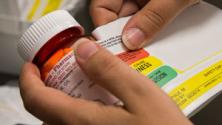What is the challenge?
Patients’ knowledge, attitudes, and behaviors impact their health outcomes in important ways. One key element of this is “self-management”—the actions that patients take and the decisions they make to deal with their health and illness. How well a patient “self-manages” is influenced by their health care experiences. When patients have interactions that deride them for their failures to lose weight or remember to take their meds, this may contribute to non-adherence, loss of confidence, and inertia. Simply lecturing patients to “shape up” isn’t an effective way to help them improve their health outcomes. Patients often receive mixed messages from health care providers, which leave patients confused and less able to engage in their own health care.
What needs to change?
To achieve better outcomes, practices should shift away from lecturing patients and instead provide self-management support, which means working with patients to help them become better managers of their own health. Self-management support is a collaborative process that empowers patients to take better care of themselves by setting realistic goals and action plans to reach them. It can be delivered in a class or group setting—or as part of the primary care visit. Effective self-management support helps patients acquire:
- Disease-specific information and skills.
- Generic competencies such as medication adherence or using health care.
- Patient empowerment and engagement, actively sharing in health care decision making with their providers.
What do we gain by making these changes?
Self-management support engages patients in their care, builds skills and confidence, and helps them change their behaviors. It increases patient empowerment and involvement in their care and helps them understand and adhere to recommendations, all of which contribute to better health outcomes and higher patient satisfaction.
- Develop a comprehensive self-management support plan.
Effective self-management support includes disease-specific information and skills, generic competencies such as medication adherence or dealing with stress, and patient empowerment or activation. To meet these needs a practice will need a comprehensive approach that addresses the following questions:
- For patients with a new condition or in need of a refresher, where in the practice or community can they get the basic information and skills to self-manage effectively?
- Who in the practice has the time and skills to work with patients on a self-management plan that includes goals and action plans?
- What additional training will these staff members need?
- What patient assessments might be useful?
- How, when, and how often will they interact with patients?
- For patients that need additional behavior change support, where in the practice or community can they get help?
- Identify and develop relationships with self-management resources in the community.
To become effective self-managers, many patients will need information, skills training, and help with behavior change that may not be available in the practice. But helpful self-management programs can often be found in the surrounding community. Practices should try to identify potentially helpful agencies and programs in their area and work to build relationships with them. Start by initiating a conversation about the services provided and how your patients might benefit from them. For several LEAP sites, such discussions improved patient access and program content.
The Chronic Disease Self-management Program (CDSMP) is a peer-led group program that has been shown to work in dozens of studies. If in your community, it can be an important resource. If not, consider organizing one.
- Train staff in the practice to provide effective self-management support.
The key to effective self-management support is empowering patients to set realistic goals and create action plans to reach them. Several LEAP sites have provided some training in motivational interviewing to most of their patient-facing staff, including providers, which helps them address self-management at every visit.
- Develop a workflow to address self-management at every encounter.
Evidence indicates that lecturing or admonishing patients to “shape up” doesn’t work. What does work is a collaborative process between caregiver and patient that empowers patients and supports realistic goals and action plans to reach them. For this reason, the primary care team should include individuals trained in motivational interviewing, problem-solving therapy, or related counseling strategy. In addition, some LEAP sites more intensively train a few other staff (often called health coaches) for more in-depth counseling for patients that need more help.
- Document self-management plans and progress in the electronic record.
Self-management goals and plans should become a key component of the patient’s medical record. In an EHR, it’s important to treat them like a medication list, ensuring that they are visible and reviewed and updated at every opportunity.
Publications
Case summariesVignettes, profiles and testimonial videos
ToolkitsImplementation guides and other documents with extensive resources included
Staff trainingTutorials, training manuals, etc.
staff
Role featuresJob descriptions, career ladders and other HR materials
WorkflowTemplates, flow sheets and mapping aids
Patient materialsAction plans, brochures, team cards, welcome letters
Video
If you have a question about the improvements, action steps, or tools & resources in this module please let us know. We're here to help. And if we can't answer your question, we can probably connect you with someone who can.











